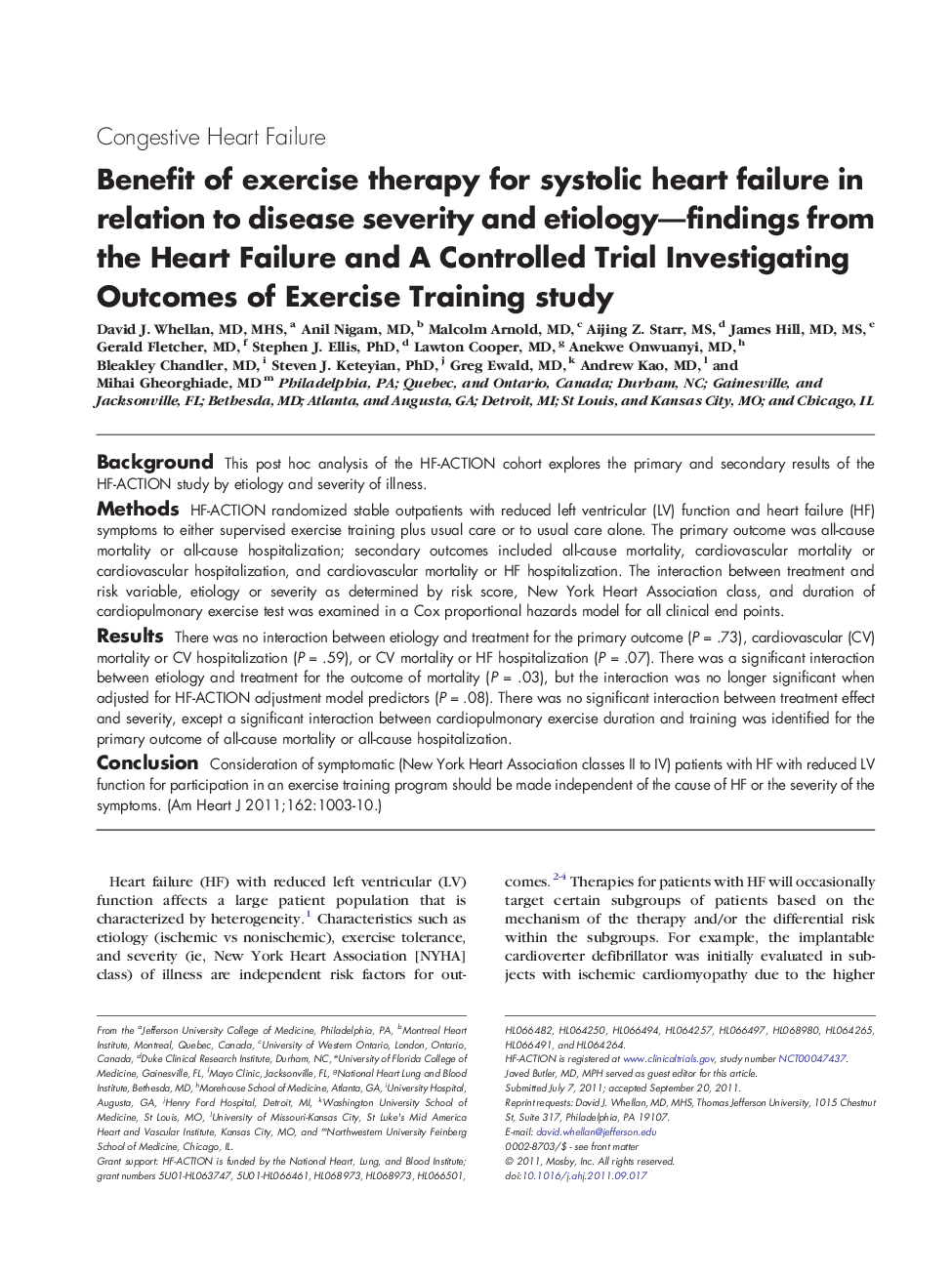| Article ID | Journal | Published Year | Pages | File Type |
|---|---|---|---|---|
| 5927093 | American Heart Journal | 2011 | 8 Pages |
BackgroundThis post hoc analysis of the HF-ACTION cohort explores the primary and secondary results of the HF-ACTION study by etiology and severity of illness.MethodsHF-ACTION randomized stable outpatients with reduced left ventricular (LV) function and heart failure (HF) symptoms to either supervised exercise training plus usual care or to usual care alone. The primary outcome was all-cause mortality or all-cause hospitalization; secondary outcomes included all-cause mortality, cardiovascular mortality or cardiovascular hospitalization, and cardiovascular mortality or HF hospitalization. The interaction between treatment and risk variable, etiology or severity as determined by risk score, New York Heart Association class, and duration of cardiopulmonary exercise test was examined in a Cox proportional hazards model for all clinical end points.ResultsThere was no interaction between etiology and treatment for the primary outcome (P = .73), cardiovascular (CV) mortality or CV hospitalization (P = .59), or CV mortality or HF hospitalization (P = .07). There was a significant interaction between etiology and treatment for the outcome of mortality (P = .03), but the interaction was no longer significant when adjusted for HF-ACTION adjustment model predictors (P = .08). There was no significant interaction between treatment effect and severity, except a significant interaction between cardiopulmonary exercise duration and training was identified for the primary outcome of all-cause mortality or all-cause hospitalization.ConclusionConsideration of symptomatic (New York Heart Association classes II to IV) patients with HF with reduced LV function for participation in an exercise training program should be made independent of the cause of HF or the severity of the symptoms.
